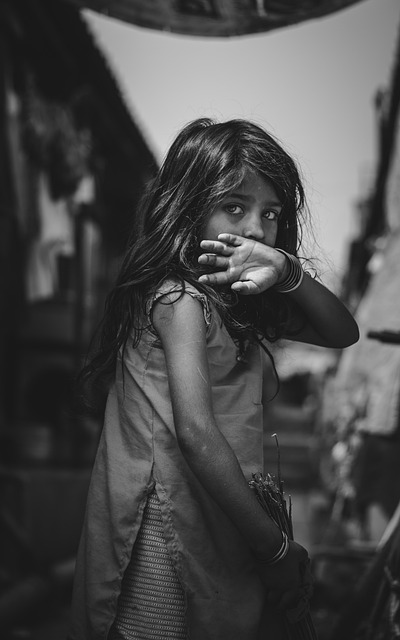Children's rights are internationally recognized and protected under various legal frameworks, with the United Nations Convention on the Rights of the Child (UNCRC) as a cornerstone treaty. This global standard sets forth children's entitlements to life, development, education, healthcare, and protection from exploitation and abuse. The UNCRC has widespread adoption and complementary instruments like the Optional Protocols and International Labour Organization conventions that address child labor. Child advocates and legal professionals are vital in championing these rights, influencing public policy, and representing children's interests in legal settings. Their efforts extend beyond reacting to current abuses to proactively shaping laws and policies that safeguard the future of children worldwide, ensuring a safe and nurturing environment for their growth and well-being. The collective work across international bodies, governments, NGOs, and communities is crucial in maintaining vigilance over children's rights, adapting to new challenges, and advocating for continuous advancements in legal protections for the world's children.
—-
In a world that champions human rights, the protection and defense of children’s rights stand paramount. This article delves into the legal mechanisms safeguarding these rights, exploring the robust frameworks enacted globally to ensure child welfare. We will examine the international agreements that have set a precedent for child advocacy, the pivotal role of legal representation in championing children’s interests, and the nuanced strategies that form the backbone of effective legal defense. Through this lens, we aim to highlight the importance of relentless vigilance and ongoing legal efforts to uphold and advance the rights of every child.
—-
- Understanding Children's Rights Legally: A Foundation for Protection
- Legal Frameworks and International Agreements Protecting Child Rights
- The Role of Advocacy and Legal Representation in Defending Child Rights
- Strategies for Effective Legal Defense and the Importance of Continuous Vigilance in Child Rights Cases
Understanding Children's Rights Legally: A Foundation for Protection

Children’s rights are legally codified measures designed to safeguard and promote the well-being, health, and development of every child without discrimination. The United Nations Convention on the Rights of the Child (UNCRC) is a cornerstone document that outlines these rights, setting forth principles and standards for ensuring the protection and fulfillment of children’s rights. It emphasizes the importance of recognizing every child as an individual with unique capabilities and needs, which in turn necessitates legal frameworks that are responsive to their diverse circumstances.
Legal instruments establishing children’s rights encompass a wide array of protections, including provisions against all forms of exploitation, violence, and discrimination. These rights are not only about the prohibition of harm but also about affirming positive actions that support the child’s development, such as access to education, healthcare, and nutrition. The implementation of these legal standards is critical in creating an environment where children can thrive without fear of abuse or neglect, and where their voices are heard in matters affecting their lives. Understanding and adhering to these legal protections form the bedrock of a society that values and invests in its future generations—children.
Legal Frameworks and International Agreements Protecting Child Rights

Globally, the legal framework for protecting children’s rights is robust and multifaceted, rooted in a series of international agreements. The United Nations Convention on the Rights of the Child (UNCRC) stands as the most comprehensive international treaty dedicated to ensuring child rights. It sets out a wide array of civil, cultural, economic, social, and political rights for children, including the right to life, survival, development, protection from harmful practices, and family care. This convention has been ratified by nearly every country in the world, reflecting a global commitment to safeguarding the well-being of children.
In addition to the UNCRC, other significant legal instruments have further strengthened the protection of child rights. The Optional Protocols to the Convention, for instance, address specific areas such as the sale of children, child prostitution, and child pornography. Furthermore, international legislation like the International Labour Organization’s Minimum Age Convention (ILO 138) and the Worst Forms of Child Labor Convention (ILO 182) aim to prevent child labor and ensure that children are protected from exploitative and hazardous work environments. These legal frameworks and agreements provide a foundation for national governments to enact laws and policies that uphold the rights of children within their jurisdictions, underscoring the importance of international cooperation in the realm of child protection.
The Role of Advocacy and Legal Representation in Defending Child Rights

In the realm of safeguarding child rights, advocacy and legal representation play pivotal roles in ensuring that the welfare and interests of children are upheld. Professionals dedicated to child advocacy work tirelessly to influence public policy and opinion in favor of children’s rights, often collaborating with legal experts to navigate the complexities of juvenile law. These champions for children’s causes advocate for legislation that protects against abuse, neglect, and exploitation, while also providing a voice for those who cannot yet articulate their own needs and rights.
Legal representation for children is critical when their rights are at stake. Lawyers specializing in juvenile law offer comprehensive legal support tailored to the unique circumstances of each child case. They act as protective intermediaries, ensuring that children’s interests are represented with the utmost diligence and care in legal proceedings. This legal defense is not merely reactive but proactive, aiming to anticipate and prevent future violations by creating robust legal frameworks that serve as shields for children’s rights, thereby fostering a safer environment where every child can thrive without fear of exploitation or abuse.
Strategies for Effective Legal Defense and the Importance of Continuous Vigilance in Child Rights Cases

The legal defense of children’s rights necessitates a multifaceted approach that encompasses robust advocacy and tailored legal strategies. One effective method is the deployment of specialized legal teams with expertise in juvenile law who can navigate the complexities of child welfare cases, ensuring that the child’s best interests are at the forefront of every decision. These teams work tirelessly to interpret and apply laws protective of children, thereby safeguarding their rights within the justice system. Additionally, leveraging international human rights frameworks, such as the United Nations Convention on the Rights of the Child, can provide a strong foundation for advocacy and legal claims on behalf of children.
Continuous vigilance is paramount in child rights cases to address emerging issues and to adapt to changing societal norms. This involves monitoring legal precedents, staying abreast of legislative changes, and ensuring that the implementation of laws is aligned with the evolving understanding of what is in the best interest of the child. Collaboration between governments, non-governmental organizations, and community groups plays a pivotal role in this ongoing oversight, creating a network of support and advocacy that reinforces the legal protections for children. Through these concerted efforts, children’s rights are not only upheld but also promoted, ensuring their voices remain heard in the corridors of power.
Children’s rights are a paramount legal concern that necessitates robust and ongoing protection. This article has outlined the foundational elements of children’s rights law, the international treaties that safeguard these rights, the critical role of advocacy and legal representation in defending them, and effective strategies for legal defense. It is clear that a multifaceted approach involving legislative frameworks, judicial oversight, and proactive legal intervention is essential to uphold children’s rights. Continuous vigilance and dedication from legal professionals, policymakers, and society as a whole are imperative to ensure these protections are not just in place but actively enforced. The future well-being of our youth hinges on the collective commitment to defend their rights legally, today and tomorrow.
